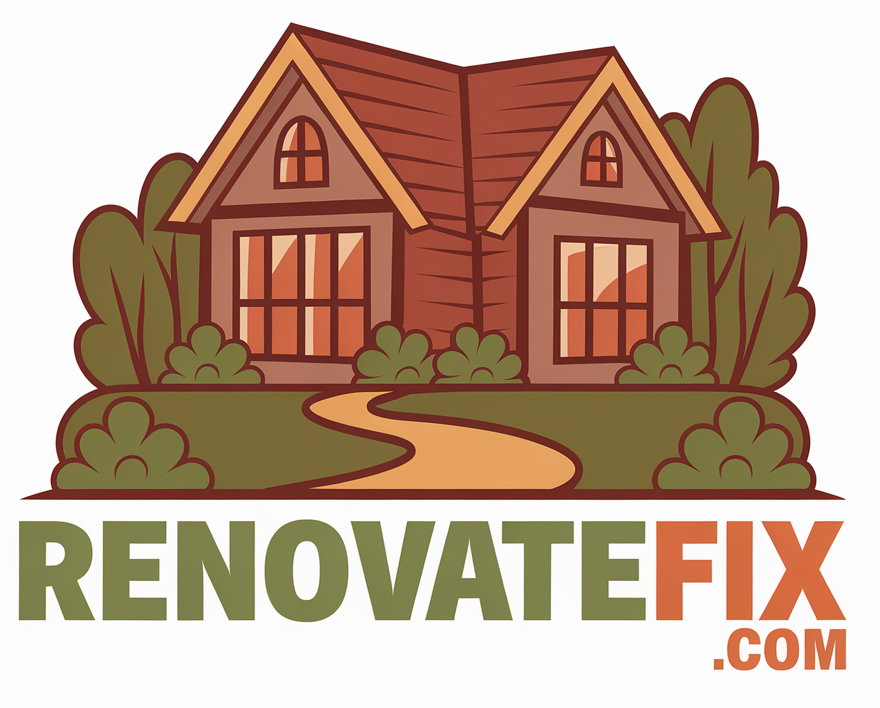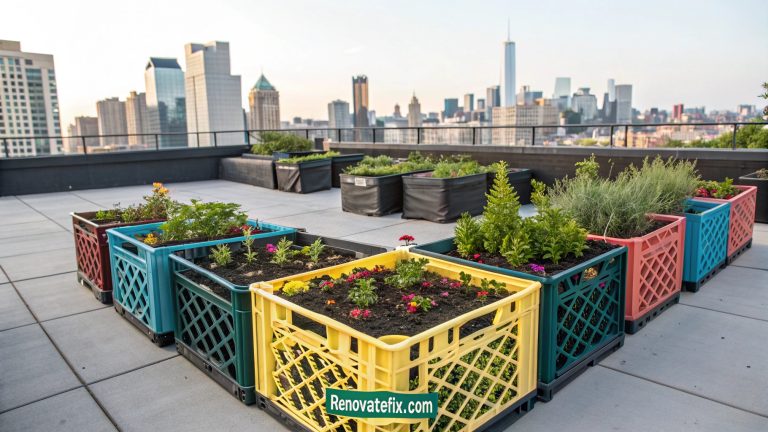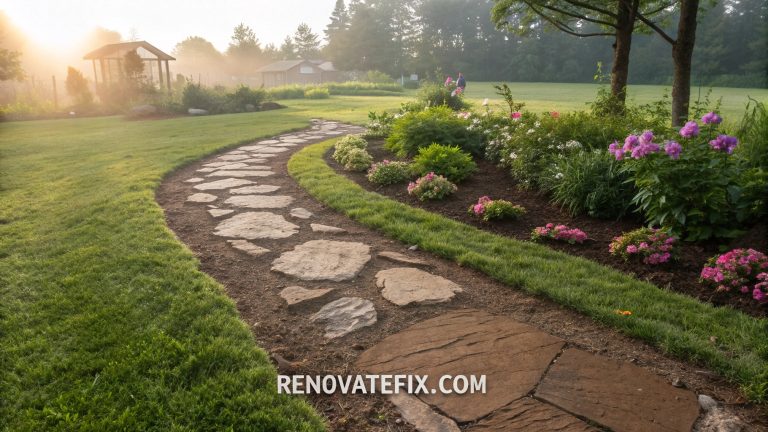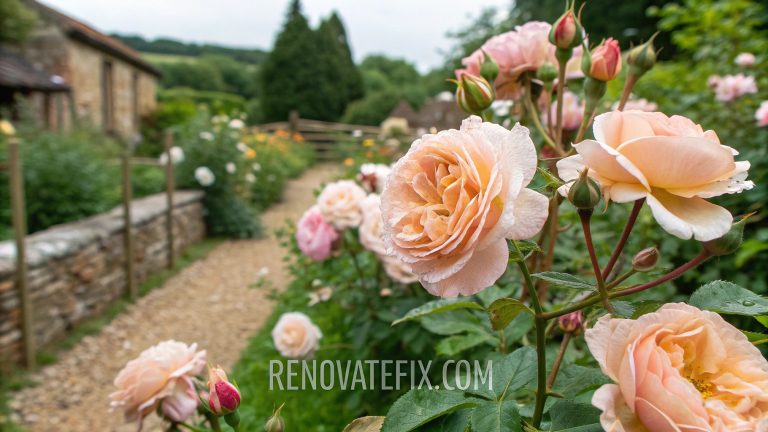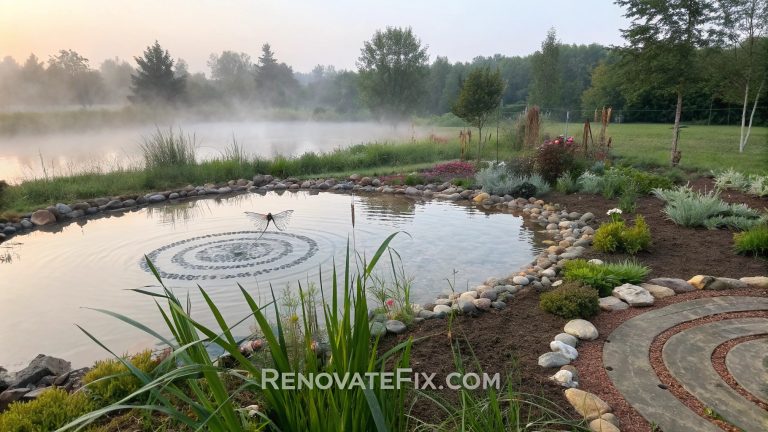Innovative Garden Design Ideas For Your Outdoor Space
The evolution of outdoor spaces has led to remarkable innovations in garden design.
Today’s landscapes blend functionality with aesthetic appeal, creating outdoor areas that serve as extensions of our living spaces.
This article explores twenty fresh approaches to outdoor sanctuaries that challenge traditional concepts while embracing sustainability and personal expression.
Whether you’re working with a compact balcony or an expansive yard, these ideas will inspire you to reimagine your green space with a contemporary mindset while maintaining connection to nature and practicality.
15 Modern Garden Design Ideas
1. Geometric Paving Patterns
Asymmetrical concrete slabs arranged in mathematical precision create rhythm across ground surfaces, drawing the eye through the landscape while providing practical walking paths.
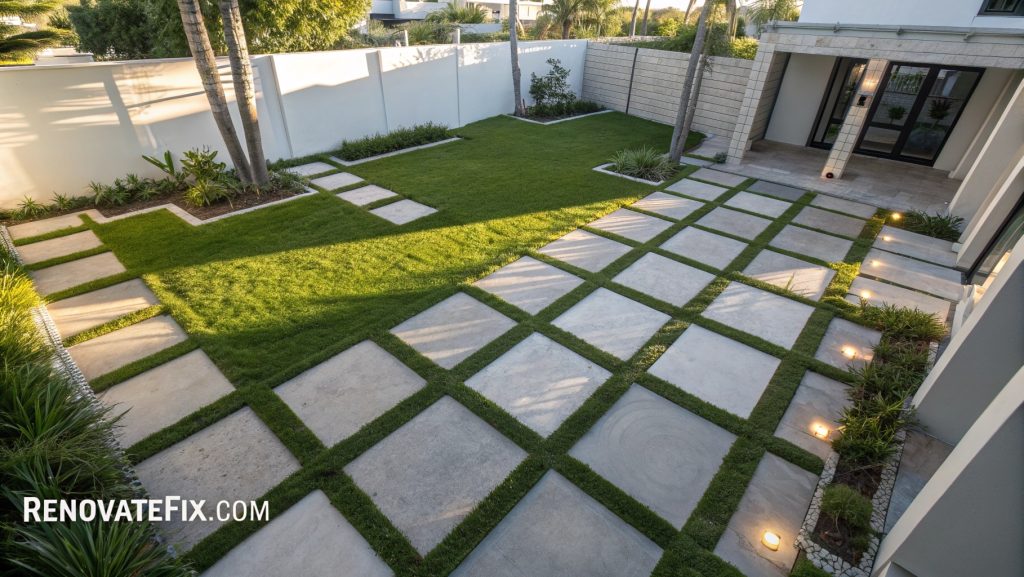
These angular formations contrast beautifully with organic plant forms, establishing visual tension that feels both ordered and relaxed simultaneously.
When wet from rain, these surfaces reflect light in fascinating ways, adding another dimension to the garden experience regardless of weather conditions.
2. Vertical Green Walls
Lush planted panels mounted on structural walls maximize growing space in limited areas, turning mundane surfaces into vibrant tapestries of foliage and blooms.
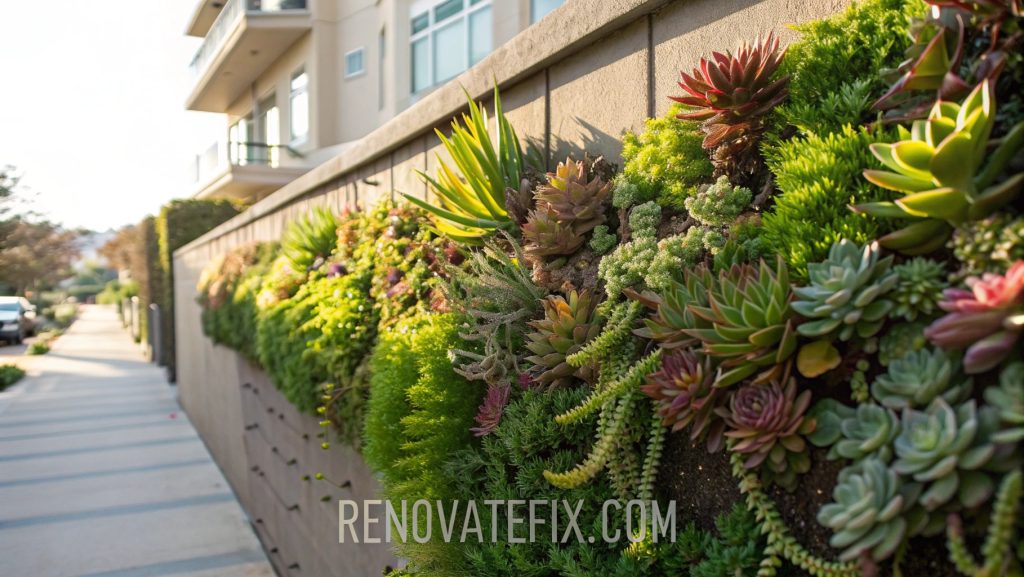
Such installations improve air quality while reducing ambient temperature around buildings, effectively combining ecological benefits with striking visual impact.
Plants selected for varying textures, colors, and growth habits create natural artwork that evolves throughout seasons, bringing life to previously unused vertical planes.
3. Outdoor Room Configurations
Defined spaces within garden boundaries function as exterior chambers, complete with comfortable seating, ambient lighting, and weather-appropriate accessories for year-round enjoyment.
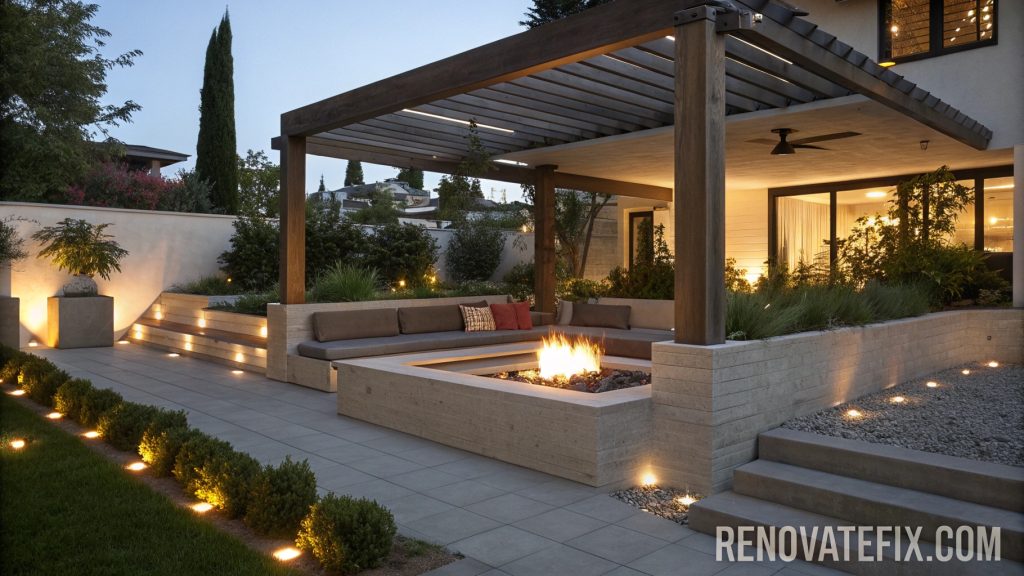
These zones blur distinctions between inside and outside living, encouraging more time spent experiencing nature regardless of urban or suburban settings.
Carefully positioned screens, either architectural or botanical, provide privacy without sacrificing openness, allowing occupants to feel protected yet connected to surrounding landscape elements.
4. Water Features with Motion Sensors
Interactive fountains activated by movement create dynamic experiences, conserving resources while providing moments of surprise and delight for garden visitors.
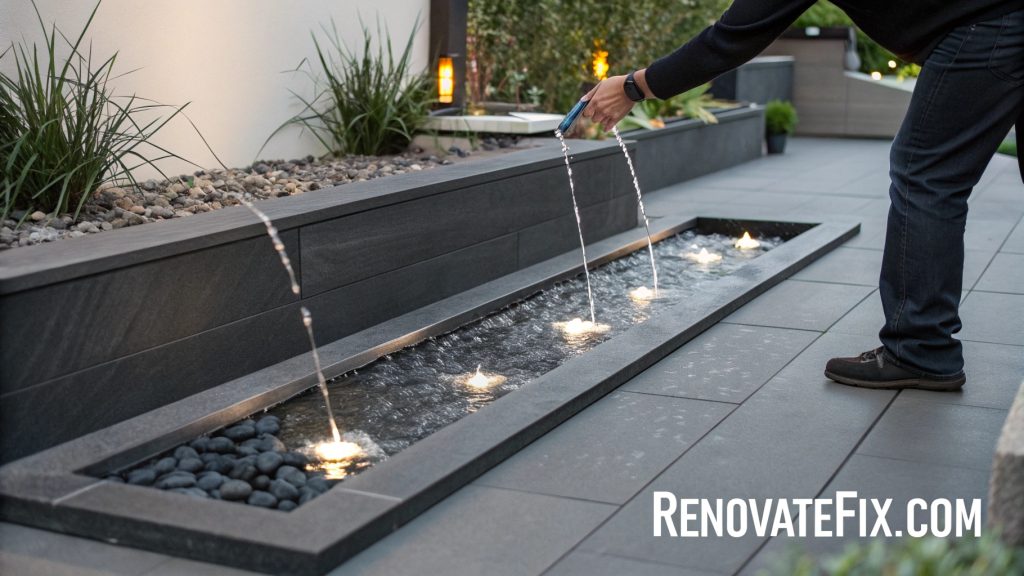
Water elements become responsive rather than static, engaging multiple senses through sound, sight, and occasional mist that cools surrounding areas during warm months.
These installations merge technology with nature in subtle ways, demonstrating how smart garden elements can enhance enjoyment while maintaining ecological responsibility.
5. Mixed Material Boundaries
Perimeter definitions combining rusted steel, polished concrete, wood and glass create textural complexity while establishing clear spatial organization throughout the garden layout.
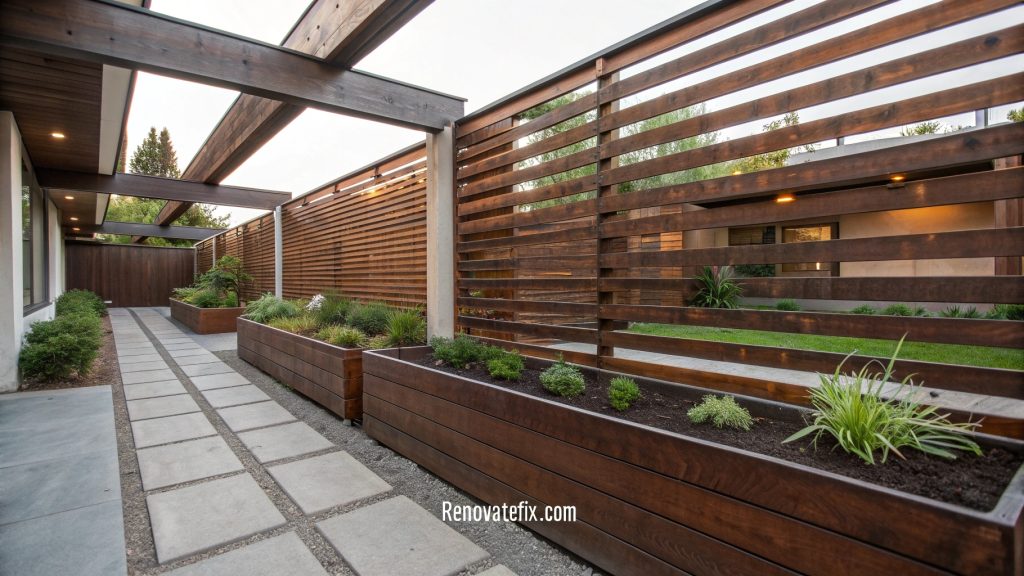
These material transitions mark thresholds between functional areas without requiring traditional fencing, allowing views to flow uninterrupted across the landscape.
Weathering properties of each substance improve with age, developing patinas that tell stories of time passing, adding depth and character unavailable in newly installed gardens.
6. Floating Decks
Elevated platforms seemingly hovering above ground level create visual lightness, minimizing disruption to existing topography while providing usable outdoor surfaces.
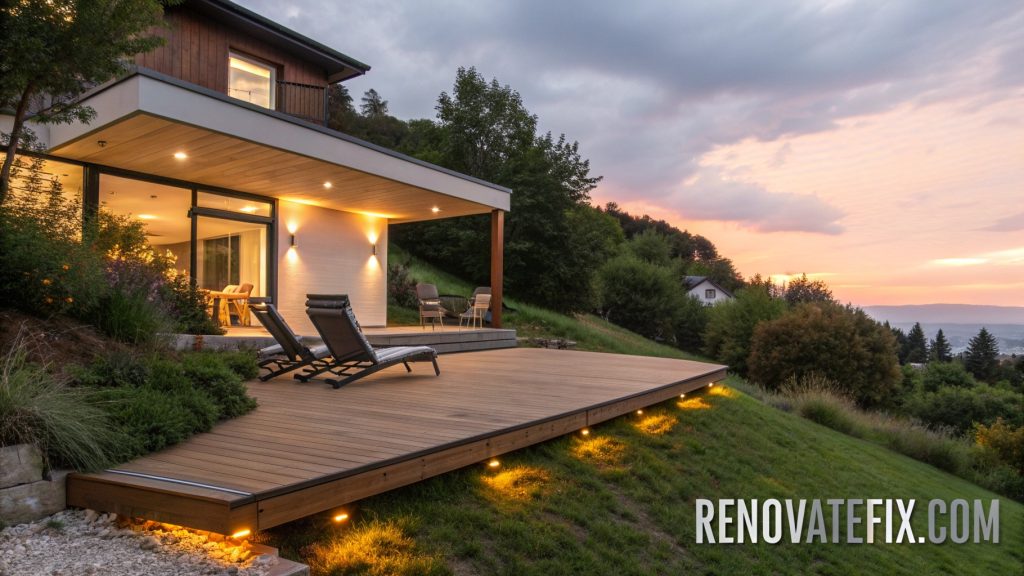
These structures cast interesting shadow patterns that change throughout the day, adding temporal dimension to garden spaces that would otherwise remain static.
Construction techniques emphasizing hidden support systems maintain illusion of weightlessness, important for achieving authentically minimal aesthetic goals within naturalistic settings.
7. Sustainable Drainage Solutions
Rain gardens strategically positioned to capture runoff become attractive ecological features rather than merely functional water management systems.
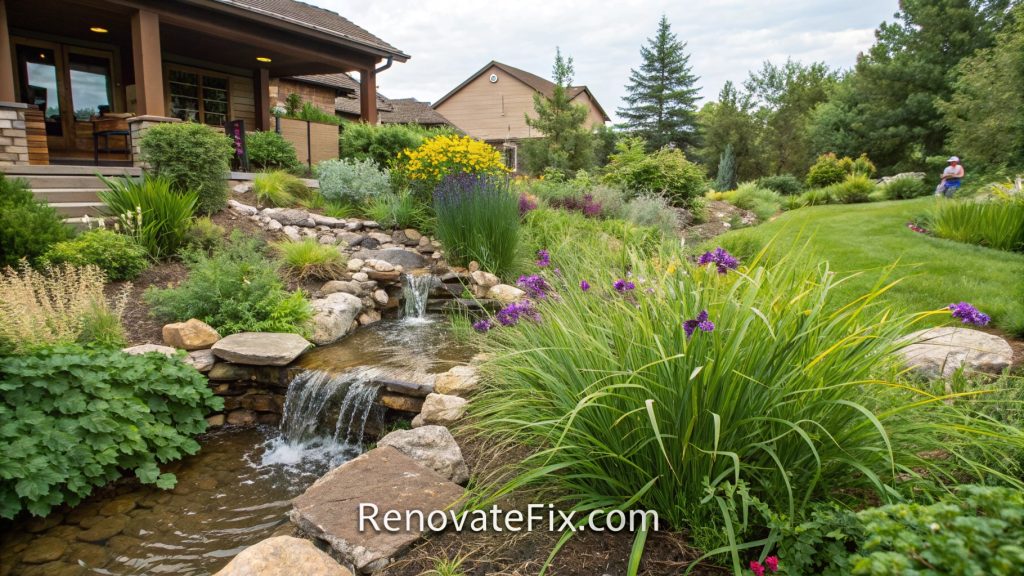
These planted depressions filter pollutants from water while supporting diverse wildlife populations, creating microhabitats within larger garden contexts.
During dry periods, these areas maintain visual interest through carefully selected plant communities adapted to fluctuating moisture conditions, ensuring year-round appeal regardless of precipitation patterns.
8. Modular Planting Systems
Reconfigurable containers allow for seasonal adjustments to garden compositions, providing flexibility impossible with permanently installed landscape elements.
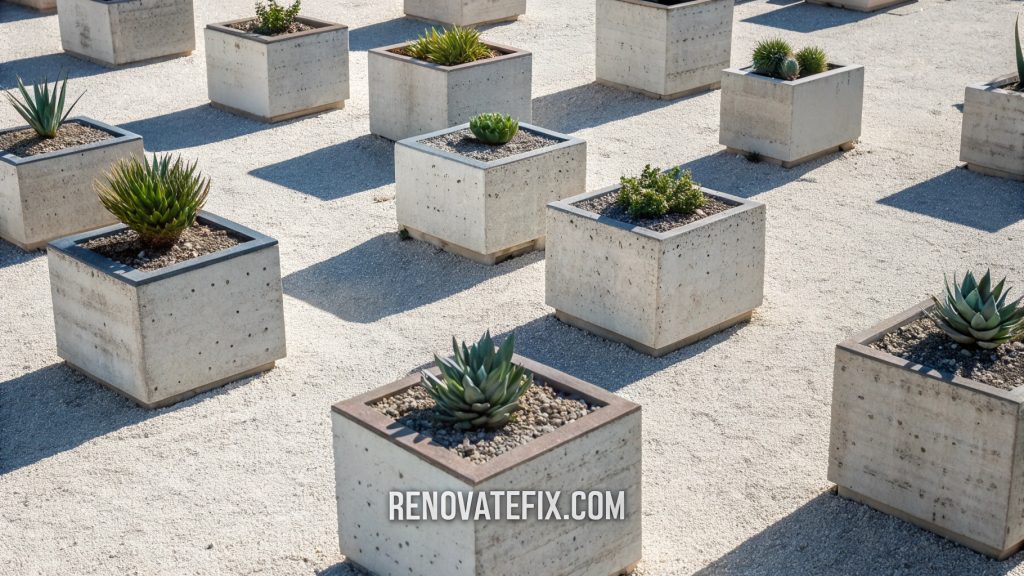
Plants grouped by growing requirements create efficient maintenance zones while facilitating experimental combinations without major renovation efforts.
These systems particularly benefit rental properties or temporary installations, enabling personalization without permanent alterations to underlying structures that might complicate future property transitions.
9. Linear Lighting Implementations
Recessed ground illumination follows architectural lines after sunset, highlighting key garden features while maintaining subdued atmosphere conducive to evening relaxation outdoors.
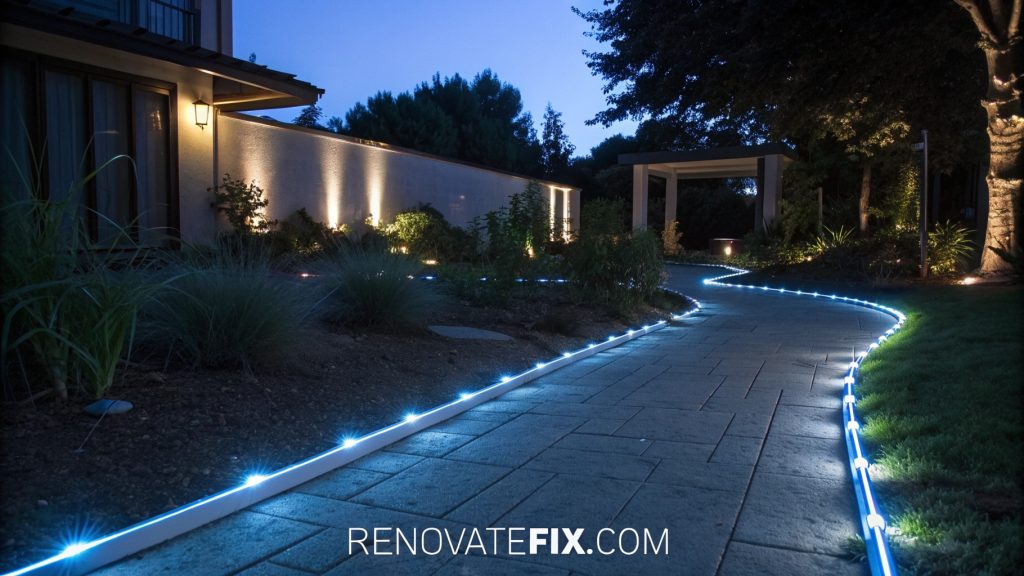
Unlike traditional spotlighting, these fixtures remain invisible during daylight hours, preserving clean aesthetic qualities essential to minimalist landscape designs.
Programmable systems adjust brightness according to activities, weather conditions, or seasonal celebrations, adding responsive qualities to otherwise fixed garden components.
10. Monochromatic Plant Palettes
Collections focusing on single color spectrums across diverse plant forms create sophisticated compositions that highlight subtle variations in foliage shapes and textures.
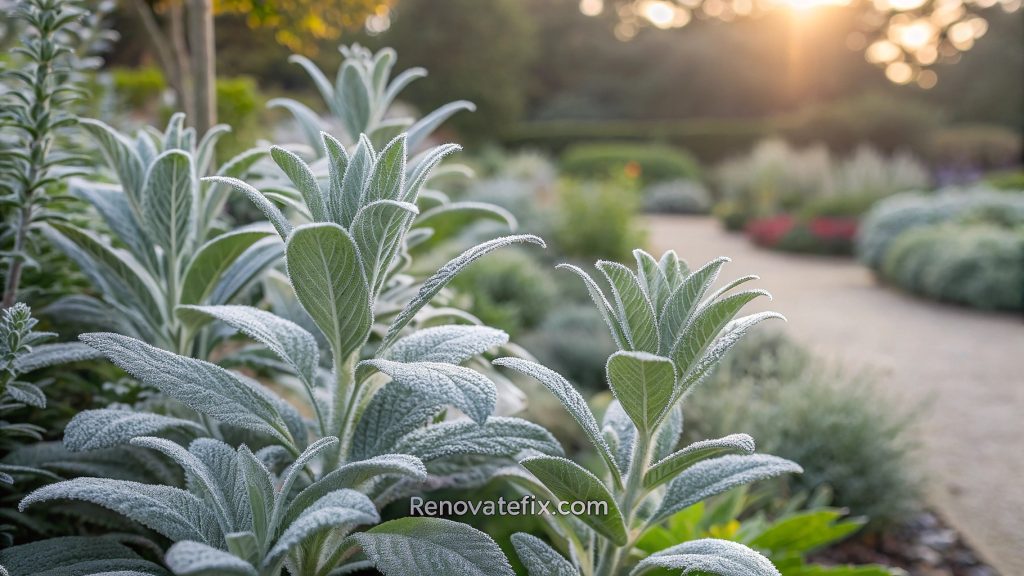
This approach simplifies visual experience while paradoxically revealing greater complexity within seemingly limited parameters, encouraging closer observation of botanical details.
Seasonal shifts remain apparent even within restricted color schemes, demonstrating how restraint often produces more impactful design statements than more chaotic polychromatic arrangements.
11. Integrated Culinary Gardens
Edible plantings arranged with ornamental consideration bring productivity into highly visible garden areas, challenging separation between decorative and functional landscape elements.
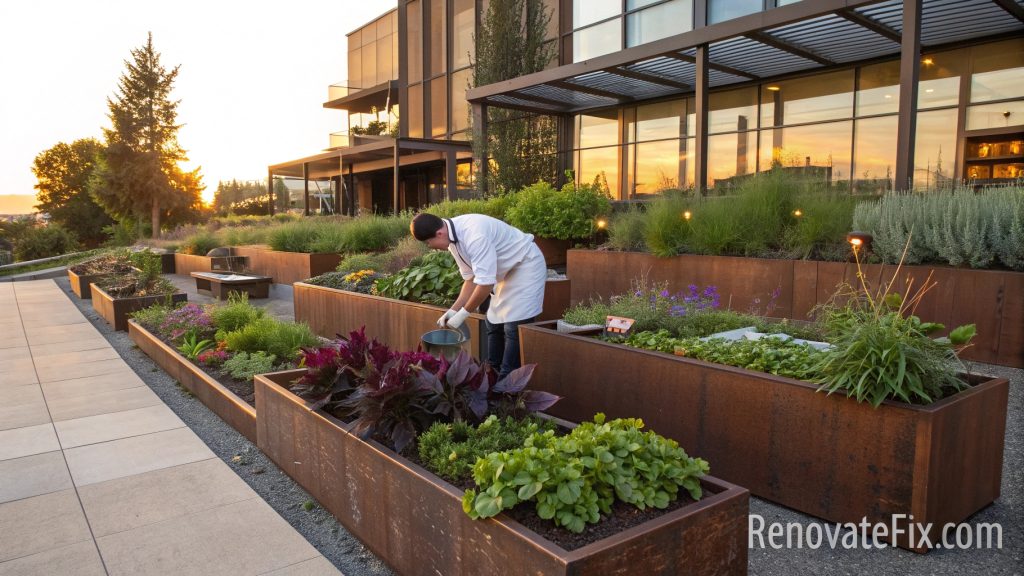
Herbs, vegetables, and fruit-bearing plants become key design components rather than relegated to distant garden corners, celebrating connection between beautiful surroundings and nourishing harvests.
Seasonal changes become especially meaningful as plants progress from flowering to fruiting stages, adding narratives about food production to garden experience.
12. Minimalist Water Conservation
Rainfall collection systems designed as sculptural elements serve both practical and aesthetic purposes, storing moisture for dry periods while adding architectural interest to garden spaces.

These installations demonstrate commitment to environmental responsibility while functioning as focal points that spark conversations about resource management among garden visitors.
Materials chosen for these components weather gracefully, developing character that improves rather than degrades as systems mature through multiple seasons of use.
13. Sound-Designed Landscapes
Garden elements selected specifically for acoustic properties create multi-sensory environments where rustling grasses, water movement, and wind-activated features produce natural soundscapes.
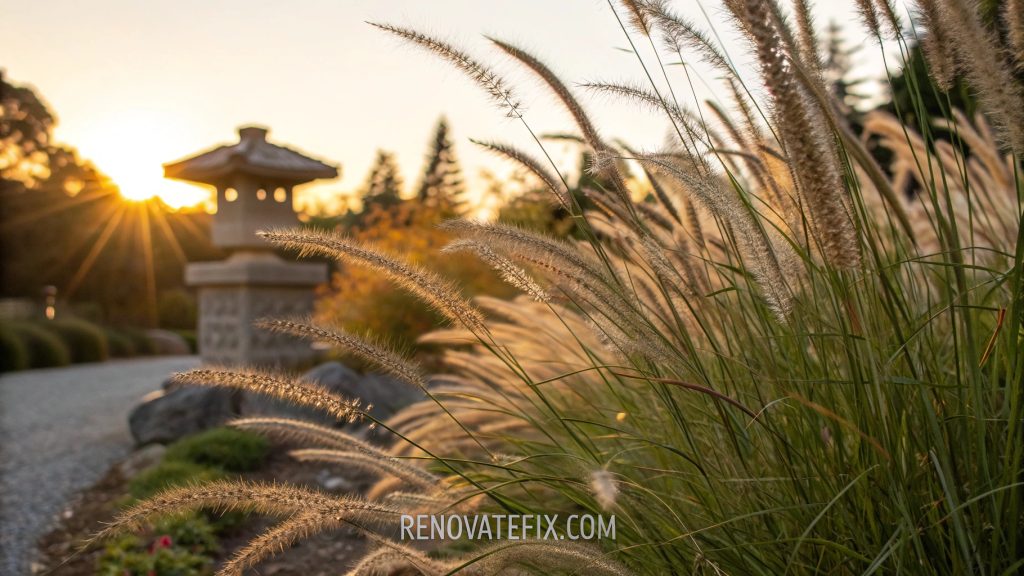
These auditory dimensions often remain overlooked in visually-focused designs but significantly enhance immersive qualities of outdoor spaces, particularly valuable in urban settings where pleasant sounds mask traffic noise.
Plant selections emphasizing seed pods, hollow stems, or papery leaves extend sensory experiences throughout changing seasons, particularly during autumn and winter months.
14. Negative Space Emphasis
Strategic emptiness between carefully positioned elements creates breathing room essential for appreciating individual components, preventing visual overload common in densely planted traditional gardens.
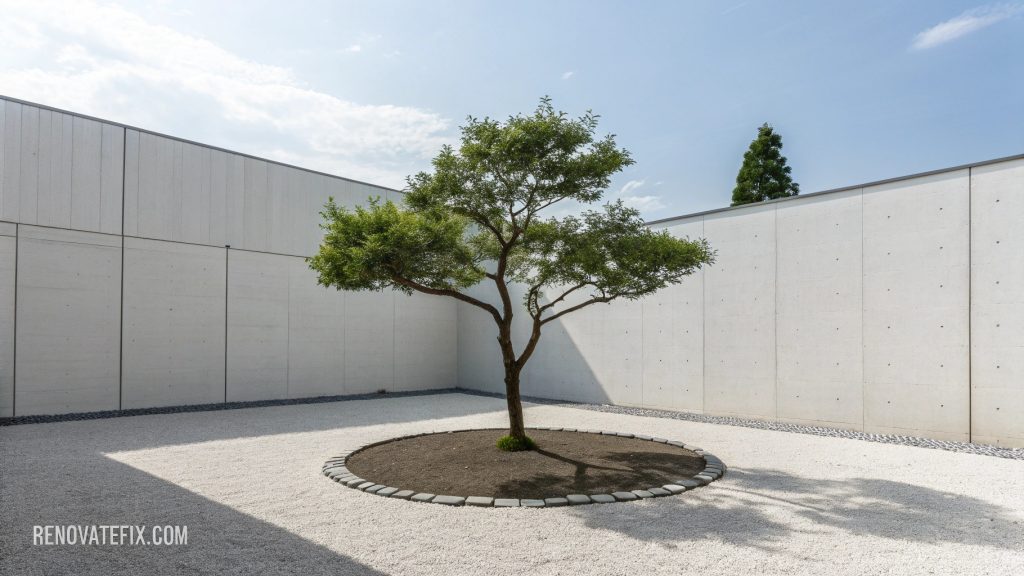
These intentional voids become as important as physical features, defining rhythm and movement throughout landscape while allowing unobstructed views across property.
Maintenance of these spaces requires disciplined approach to prevent gradual filling, preserving original design intent against natural tendency toward increased complexity over time.
15. Pollinator Pathways
Connected planting corridors specifically designed to support bees, butterflies and birds create functional ecosystems within decorative frameworks, merging conservation efforts with beautiful garden displays.
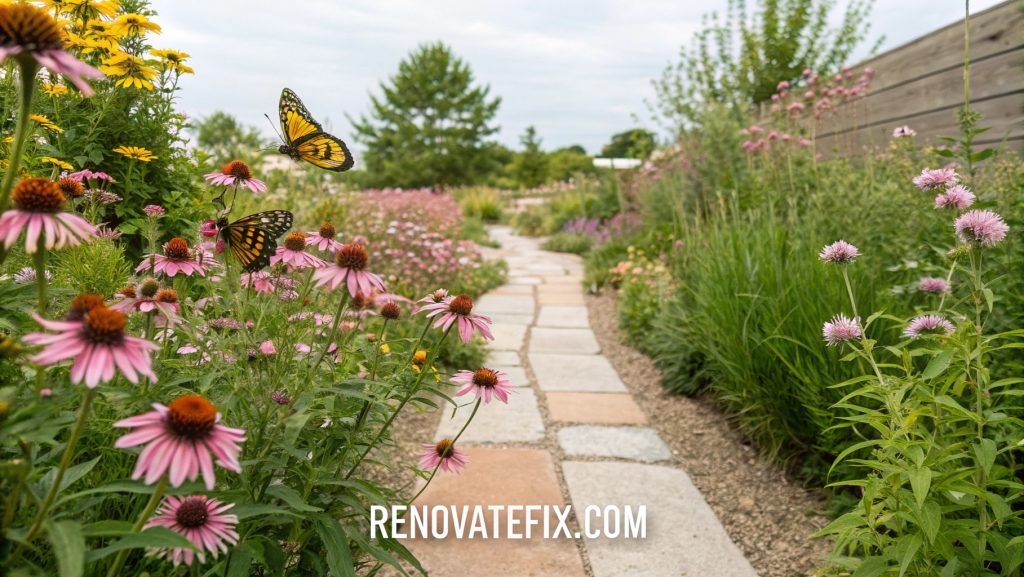
These linear arrangements facilitate wildlife movement through fragmented urban landscapes, increasing biodiversity while providing changing seasonal interest for human observers.
Plant selections emphasizing extended blooming periods ensure continuous resource availability for beneficial insects, demonstrating how ecological function enhances rather than compromises aesthetic garden qualities.
16. Micro-Climate Modifications
Architectural elements positioned to manipulate air flow, temperature and humidity create comfortable outdoor environments extending usable seasons beyond typical regional limitations.
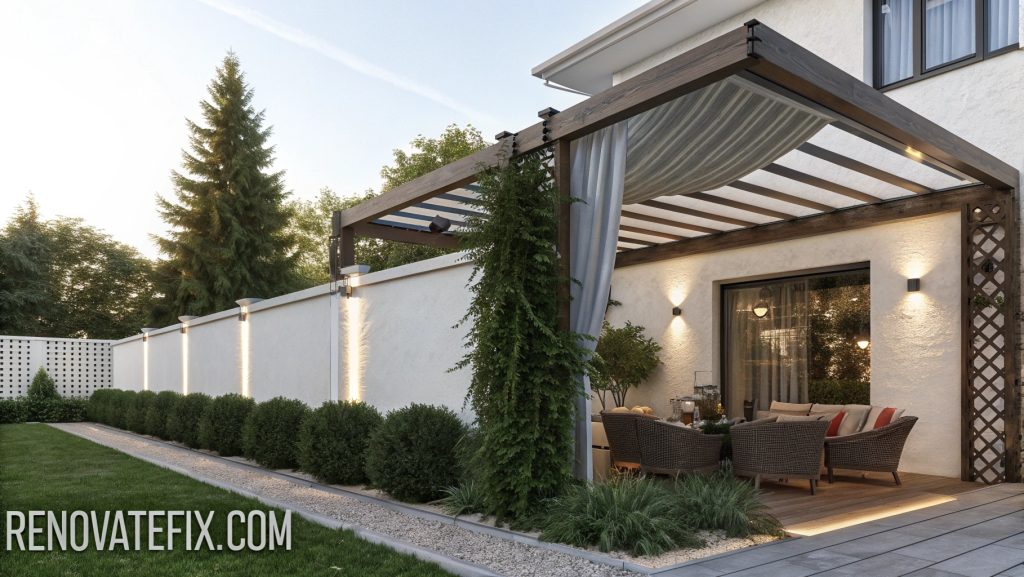
Reflecting surfaces bounce winter sunlight toward seating areas while summer shade structures protect from excessive heat, demonstrating responsive approach to environmental conditions.
These interventions blend seamlessly with overall aesthetic vision while substantially improving practical functionality, making outdoor living possible during previously inhospitable weather periods throughout changing seasons.
17. Night Garden Specialization
Plant selections focusing on evening-blooming species, reflective foliage, and luminous qualities create magical spaces designed specifically for after-dark enjoyment when many gardens disappear into darkness.

White, silver, and pale yellow flowers become luminous focal points under moonlight, extending garden hours into evening when cooler temperatures might make outdoor experiences more comfortable.
Subtle lighting enhances rather than overpowers these natural qualities, respecting darkness as essential component of complete garden experience.
18. Repurposed Industrial Elements
Salvaged mechanical components reimagined as garden sculptures or functional features bring historical narratives into landscape contexts, creating dialogue between manufactured past and living present.

These objects develop beautiful patinas through exposure to elements, their weathering processes becoming part of ongoing garden story rather than signs of deterioration.
Scale contrasts between massive industrial artifacts and delicate plantings create compelling visual tensions impossible to achieve with newly manufactured garden ornaments.
19. Rain-Activated Features
Garden elements revealing new dimensions during precipitation transform potentially disappointing weather into anticipated experiences, encouraging outdoor engagement regardless of conditions.
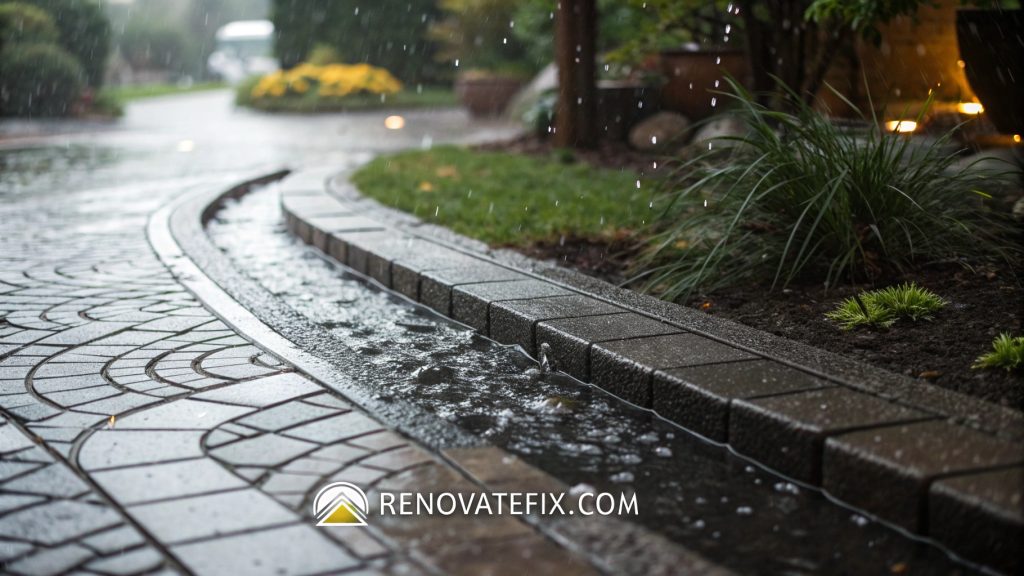
Stones selected for color changes when wet, pathways revealing hidden patterns during rainfall, and water-directing channels suddenly becoming active create dynamic qualities absent from static landscapes.
These features celebrate rather than merely tolerate natural cycles, fundamentally shifting perspective on what constitutes “good” weather for garden enjoyment.
20. Cross-Cultural Fusion Approaches
Garden compositions borrowing principles from diverse global traditions while avoiding direct mimicry create fresh expressions transcending geographic limitations.

These approaches extract underlying spatial concepts, material relationships, and human-nature connections rather than superficial stylistic elements, resulting in authentic rather than appropriative designs.
Careful study of historical landscape philosophies reveals universal principles applicable across contexts, allowing meaningful cross-pollination between traditions while respecting their distinct cultural origins.
Conclusion
The evolution of modern garden design continues to push boundaries while honoring fundamental connections between humans and nature.
These twenty approaches demonstrate how thoughtful innovation can transform outdoor spaces into functional extensions of our homes while addressing environmental concerns and personal expression.
As we move forward, the most successful gardens will likely blend these concepts rather than adhering strictly to singular approaches, creating unique expressions suited to specific sites and inhabitants.
The true measure of successful garden design ultimately lies not in rigid adherence to trends but in creating spaces that enhance daily life through meaningful interaction with the natural world, regardless of scale or location.
